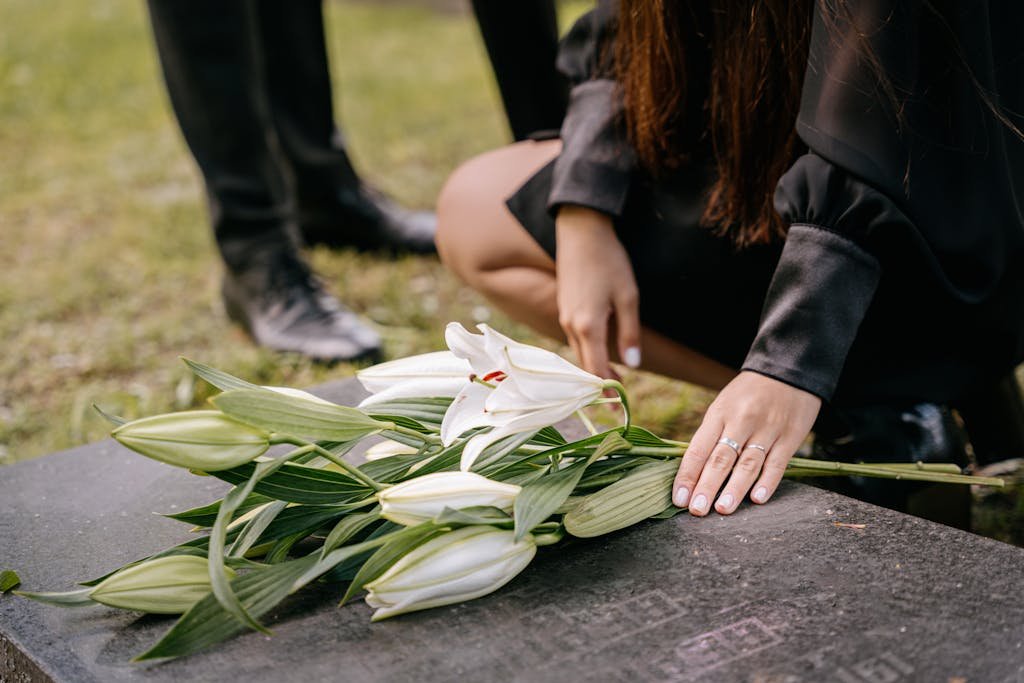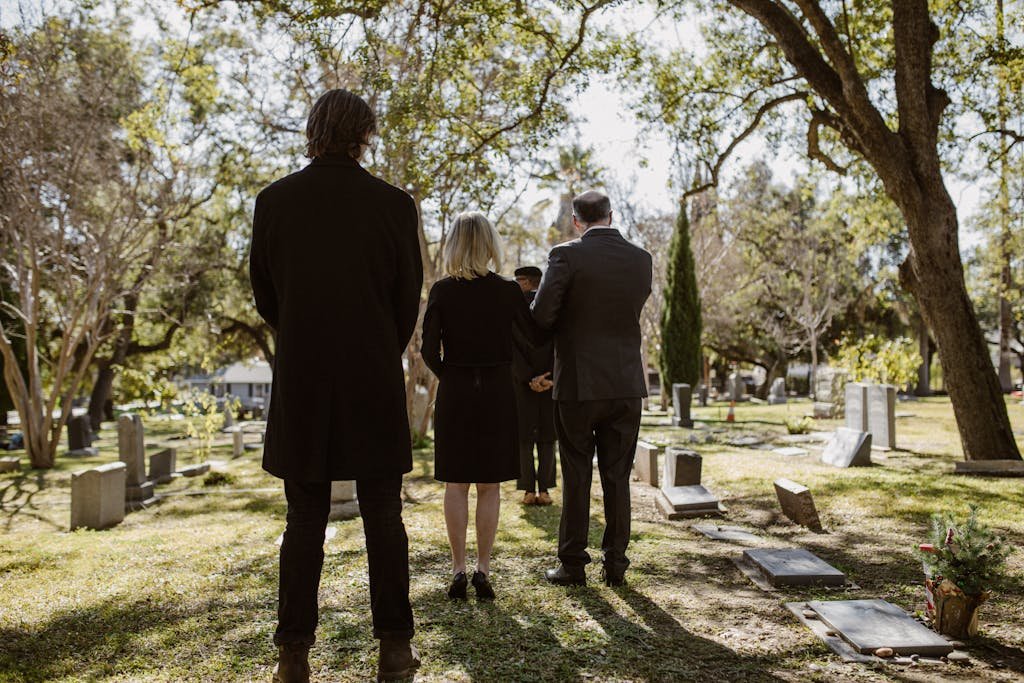How Long After Death is the Funeral?
When someone passes away, families immediately face practical questions, including: how long after death is the funeral? The timing between death and funeral services involves legal requirements, religious traditions, logistical considerations, and family preferences that can significantly affect when final services occur.
Understanding typical timelines for how long after death is the funeral helps families plan appropriately, manage expectations, and make informed decisions during an already difficult time. While some funerals occur within 24-48 hours, others may be delayed weeks or even months depending on circumstances. No single “correct” timeline exists, but understanding the factors that influence funeral timing helps you navigate this process.
The Short Answer: How long after death is the funeral? Typically 3-7 days in the United States, though this varies significantly based on religious requirements, embalming status, cremation plans, travel needs for distant family, and autopsy or investigation requirements. Some religious traditions require burial within 24-48 hours, while other circumstances may delay services for weeks.

Typical Timeline: How Long After Death is the Funeral in the U.S.?
Average Funeral Timing After Death
Standard Timeline: 3-7 Days
Most American funerals occur within one week of death:
Days 1-2 After Death:
- Body transported to funeral home or morgue
- Family begins making arrangements
- Death certificate processing begins
- Initial decisions about burial vs. cremation
- Contacting family and friends
Days 3-5 After Death:
- Viewing or visitation (if held)
- Funeral service typically occurs
- Burial or cremation follows service
- Most common timing for traditional funerals
Days 6-7 After Death:
- Later end of typical range
- Allows more time for distant family travel
- May accommodate weekend service scheduling
- Provides more planning time
According to the National Funeral Directors Association (https://www.nfda.org), the average time between death and funeral service in the United States is approximately 5 days, though significant variation exists based on circumstances.
Why 3-7 Days Works Well:
This timeframe balances several competing needs:
- Allows reasonable time for family travel
- Permits adequate funeral planning
- Provides viewing opportunity if desired
- Meets most religious and cultural expectations
- Stays within practical limits for body preservation
Do you have to be embalmed affects timing, as unembalmed bodies typically require faster services or refrigeration.
Regional and Cultural Variations in Funeral Timing
Southern United States: Traditionally faster funerals (3-5 days typical), often influenced by Baptist and Methodist traditions emphasizing prompt burial.
Northeastern United States: Often longer timelines (5-7 days), accommodating Catholic wakes and Jewish traditions while allowing family travel time.
Western United States: More variable timing, reflecting diverse population and acceptance of extended delays for family gathering or memorial services held weeks after death.
Rural vs. Urban Areas:
- Rural: Often faster (community proximity, simpler logistics)
- Urban: May be longer (scheduling conflicts, busy funeral homes, distant family)
Religious Requirements: How Long After Death is the Funeral?
Jewish Funeral Timing After Death
Traditional Requirement: Within 24 Hours
Jewish law (Halakha) requires burial as soon as possible, ideally within 24 hours of death:
Why So Fast:
- Respects the dignity of the deceased
- Considered a mitzvah (commandment) to bury promptly
- Body should return to earth without delay
- Practical considerations in hot climates where tradition developed
Modern Modifications:
- Orthodox communities typically maintain 24-hour standard
- Conservative and Reform communities may allow 2-3 days
- Delays permitted for:
- Shabbat observance (no burials Friday evening-Saturday evening)
- Allowing distant family to arrive
- Legal requirements (autopsy, investigation)
- Logistical complications
Practical Timeline:
- Death certificate obtained immediately
- Funeral arrangements made within hours
- Tahara (ritual washing) performed by Chevra Kadisha
- Simple pine casket or shroud
- Burial within 24-48 hours typically
Jewish tradition prohibits embalming except when legally required, supporting rapid burial timeline.
Islamic Funeral Timing After Death
Required Timeline: Within 24 Hours
Islamic law requires burial as quickly as possible, preferably within 24 hours:
Religious Basis:
- Quranic teachings emphasize prompt burial
- Respect for the deceased requires swift disposition
- Body should return to earth quickly
- Embalming prohibited (supports fast timeline)
Practical Islamic Funeral Timeline:
- Death certificate obtained immediately
- Ghusl (ritual washing) performed by same-gender Muslims
- Body wrapped in kafan (simple white shroud)
- Janazah (funeral prayer) held at mosque or cemetery
- Burial within 24 hours when possible
Permitted Delays:
- Waiting for close family members traveling
- Legal requirements (autopsy if mandated)
- Logistical challenges in non-Muslim-majority countries
- May extend to 2-3 days but rarely longer
The Islamic Networks Group (https://ing.org) notes that Muslim communities in the United States often coordinate with funeral homes experienced in rapid burial timelines.
Catholic Funeral Timing After Death
Traditional Timeline: 3-7 Days
Catholic tradition allows more flexibility than Jewish or Islamic practices:
Typical Catholic Funeral Timeline:
Days 1-2:
- Wake or vigil service at funeral home or church
- Family receives visitors
- Rosary often recited
Day 3-5:
- Funeral Mass at church
- Committal service at cemetery
- Reception or meal following
Catholic Preferences:
- Three-day period common (symbolic of Christ’s resurrection on third day)
- Allows time for proper wake and visitation
- Accommodates travel for distant family
- Permits adequate Mass and service preparation
Embalming: Permitted by Catholic Church, allowing for longer timelines and viewing.
The United States Conference of Catholic Bishops (https://www.usccb.org) provides guidance on Catholic funeral practices that support this timeline flexibility.
Protestant Funeral Timing After Death
Variable Timeline: 3-7 Days Typically
Protestant traditions show wide variation based on denomination:
Baptist, Methodist, Presbyterian:
- Generally 3-5 days after death
- Viewing often held day before or hours before service
- Service at church or funeral home
- Burial immediately following
Pentecostal, Evangelical:
- Similar 3-5 day timeline
- May include multiple services or prayer gatherings
- Less formal than mainline Protestant traditions
Episcopal, Lutheran:
- Often 4-7 days
- More liturgical services requiring planning
- Closer to Catholic traditions in formality
Factors Affecting Protestant Timing:
- Church availability for service
- Pastor’s schedule
- Family preferences
- No specific religious requirements for timing
Buddhist and Hindu Funeral Timing After Death
Cremation-Focused Traditions:
Buddhist Funerals:
- Timing varies by Buddhist tradition (Tibetan, Japanese, Thai, etc.)
- Generally 3-7 days after death
- May include multiple ceremonies
- Cremation typically preferred
- Some traditions hold body longer for chanting and prayers
Hindu Funerals:
- Traditionally within 24 hours where possible
- Cremation strongly preferred
- In India, same-day cremation common
- In United States, 2-5 days typical (logistical constraints)
- Body should be cremated before next sunrise ideally
Cremation vs burial cost comparison matters for families choosing between options.
Practical Factors Affecting How Long After Death is the Funeral

Embalming and Body Preservation Impact on Funeral Timing
Without Embalming: Faster Timeline Required
Unembalmed bodies require:
- Refrigeration to slow decomposition
- Burial/cremation within 3-5 days typically
- Faster decision-making and planning
- Less flexibility for delays
With Embalming: Extended Timeline Possible
Embalmed bodies allow:
- Viewing 7-10 days after death
- More time for family travel
- Flexible service scheduling
- Reduced urgency in planning
Cost Consideration: Embalming costs $500-$1,000, so families choosing rapid burial may save this expense. What is the cheapest way to be buried often involves skipping embalming.
Climate Impact:
- Hot climates necessitate faster services or embalming
- Cold climates provide some natural preservation
- Humidity accelerates decomposition
Autopsy and Investigation Delays in Funeral Timing
When Autopsy is Required:
Certain deaths legally require autopsy:
- Unexpected or suspicious deaths
- Deaths without recent physician care
- Accidents, homicides, suicides
- Deaths in custody
- Public health concerns
Autopsy Timeline Impact:
Standard Autopsy:
- 1-3 days for autopsy to be performed
- Additional days for body release to funeral home
- Total delay: 3-7 days typically
Complex Cases:
- Toxicology testing: 2-6 weeks for results
- Body may be released for funeral before complete results
- Allows funeral to proceed while investigation continues
Criminal Investigation:
- Body held as evidence potentially weeks
- Rare but can significantly delay services
- Family may hold memorial service without body present
Accidental Death:
- May require investigation even if not suspicious
- Insurance purposes may necessitate autopsy
- Adds 2-5 days typically
Family Travel and Scheduling in Funeral Timing
Accommodating Distant Family:
Modern Challenges:
- Families dispersed across country or internationally
- Work commitments and scheduling conflicts
- Travel costs and logistics
- School schedules for younger family members
Balancing Considerations:
- How long can body be held?
- Who are essential attendees vs. nice to have?
- Can services accommodate those who can’t travel?
- Would memorial service weeks later work better?
Weekend vs. Weekday Services:
- Weekend funerals often scheduled to accommodate working people
- May require waiting extra days for weekend availability
- Funeral homes busier on weekends
- Church availability may affect scheduling
Travel Time Examples:
- International family: 1-3 days travel time plus planning
- Cross-country: 1-2 days if immediate flights available
- Within region: Same day or next day typically
Funeral Home and Cemetery Availability
Scheduling Constraints:
Busy Funeral Homes:
- May be handling multiple services daily
- Limited viewing room availability
- Staff scheduling requirements
- Equipment and vehicle availability
Cemetery Scheduling:
- Grave digging requires advance notice (24-48 hours typically)
- Weather constraints (ground frozen, heavy rain)
- Multiple burials may be scheduled same day
- Staff availability limitations
Church or Venue Availability:
- Churches often booked weeks in advance
- May need to work around existing events
- Popular clergy may have scheduling conflicts
- Venue capacity considerations
How long does it take to get a headstone after death extends months beyond the funeral, so memorial timing doesn’t affect marker placement.
Holidays and Special Circumstances in Funeral Timing
Holiday Timing Challenges:
Major Holidays:
- Many funeral homes closed or limited hours
- Cemeteries may not allow burials
- Churches scheduling conflicts
- Family gathering difficulties
Christmas/New Year Period:
- Services often delayed until after January 1
- Some funeral homes operate with reduced staff
- Extended family already traveling for holidays (could help or hinder)
Memorial Day, Labor Day, July 4th:
- Cemetery closures possible
- Weekend timing may help or hurt attendance
- Three-day weekends affect scheduling
Religious Holidays:
- Jewish High Holy Days: No burials during Rosh Hashanah or Yom Kippur
- Easter weekend: Some Christians prefer not to hold funerals
- Ramadan: May affect Muslim funeral timing and attendance
Special Events:
- Major family events (weddings, graduations)
- Natural disasters or emergencies
- Pandemic or health crisis restrictions
- Weather emergencies (hurricanes, blizzards)
Extended Delays: How Long After Death Can Funerals Be Held?

Reasons for Significantly Delayed Funerals
Weeks to Months After Death:
Acceptable Reasons for Delay:
Complex Estate or Legal Issues:
- Awaiting toxicology or investigation results
- Legal disputes requiring resolution
- Estate complications affecting funeral funding
International Repatriation:
- Death abroad requiring body transport home
- Complex paperwork and international coordination
- Can take 1-3 weeks or longer
- Some families cremate abroad and transport ashes (faster)
Military Funeral Coordination:
- Arranging military honors and burial at national cemetery
- Coordinating with military personnel schedules
- May take 2-4 weeks
Organ Donation:
- Body held during organ procurement process
- Can add several days to timeline
- Family typically accepts delay for life-saving gift
Extreme Weather:
- Ground frozen solid (northern winter burials)
- Severe storms preventing cemetery access
- Natural disasters
Family Coordination:
- Deployed military family member returning
- Incarcerated family member seeking furlough approval
- Serious illness preventing travel until recovered
Memorial Services vs. Funerals:
- Body buried/cremated promptly
- Memorial service scheduled weeks or months later
- Allows for better planning and attendance
- Increasingly common approach
Very Long Delays: Months After Death
Extreme Circumstances:
Body Not Recovered:
- Missing persons declared deceased
- Memorial service held without body
- May be months or years after presumed death
Forensic Investigation:
- Complex criminal cases
- Body held as evidence extended period
- Family may hold services without body
International Complications:
- Deaths in countries with complicated bureaucracy
- War zones or dangerous areas
- Political complications
Financial Constraints:
- Family saving money for desired funeral
- Awaiting life insurance payouts
- Crowdfunding for funeral expenses
Pandemic or Health Crisis:
- COVID-19 caused significant funeral delays in 2020-2021
- Some families waited months for safer gathering conditions
- Backlog of services at funeral homes
How much does it cost to be buried affects whether families can afford immediate services or need time to arrange funding.
Direct Burial and Cremation: How Long After Death?
Immediate Disposition Timelines
Direct Burial Without Service:
- Can occur 1-3 days after death
- Minimal planning required
- No embalming needed
- Simple casket or container
- Cemetery plot and opening/closing scheduled
- Memorial service held later if desired
Direct Cremation:
- Often fastest option
- Can occur 24-48 hours after death (state laws vary)
- No embalming required
- Minimal container used
- Ashes returned to family within 3-7 days
- Memorial service scheduled independently
Legal Waiting Periods: Some states require waiting periods before cremation:
- California: 24-hour waiting period
- Other states: Similar brief waiting periods
- Designed to ensure proper identification and documentation
- Prevents hasty decisions
Why Choose Immediate Disposition:
- Religious requirements
- Financial constraints (less expensive)
- Family preference for private, simple process
- Planning memorial service for later date when more can attend
Memorial Services Long After Death
Trend Toward Delayed Memorials:
Increasingly common pattern:
- Body disposed of quickly (burial/cremation within days)
- Memorial service scheduled weeks or months later
- Better timing for family gathering
- Less time pressure for planning
- Less expensive than traditional funeral
Advantages of Delayed Memorial Services:
- More people can attend (better scheduling)
- Less stressful planning process
- Can be held at meaningful location
- Weather considerations for outdoor services
- More celebration of life than somber funeral
Typical Timeline:
- Body disposition: 3-7 days after death
- Memorial service: 2-8 weeks after death
- Some families wait months for significant date (birthday, anniversary)
Legal Requirements Affecting How Long After Death is the Funeral
Death Certificate Requirements
Must Be Completed Before Funeral:
Every state requires death certificate before final disposition:
Who Completes It:
- Physician, coroner, or medical examiner certifies cause of death
- Funeral director completes personal information
- Filed with state vital records office
Timeline:
- Usually completed within 24-72 hours
- Can delay funeral if physician not immediately available
- Autopsy cases take longer
Why It Matters:
- Burial/cremation permit issued only after death certificate
- Funeral cannot proceed without proper documentation
- Legal requirement in all states
State-Specific Regulations on Funeral Timing
Varying State Laws:
Refrigeration or Embalming Requirements: Some states require preservation after certain time:
- Body must be embalmed OR refrigerated after 24-72 hours
- Varies by state
- Affects how long families can delay
Cremation Waiting Periods:
- Some states mandate 24-48 hour wait before cremation
- Allows time for second thoughts or investigation
- Does not apply to burial
Transportation Across State Lines:
- Often requires embalming or specific sealed container
- Additional documentation required
- Can add days to timeline
The Centers for Disease Control and Prevention (https://www.cdc.gov) provides state-by-state vital statistics information including death certificate requirements.
Planning Timeline: What Happens Between Death and Funeral
Day-by-Day After Death: Funeral Planning
Day 1: Immediate Aftermath (0-24 Hours After Death)
- Death occurs and is legally pronounced
- Body transported to funeral home, morgue, or hospital
- Family notified if not present
- Immediate decisions: autopsy consent, organ donation
- Initial funeral home contact
- Death certificate process begins
Day 2: Early Planning (24-48 Hours After Death)
- Meet with funeral director
- Decide burial vs. cremation
- Select service type and timing
- Choose casket or urn
- Arrange cemetery plot if needed
- Begin notifying extended family and friends
- Start writing obituary
Day 3: Detailed Planning (48-72 Hours After Death)
- Finalize service details
- Coordinate with clergy or celebrant
- Select music, readings, speakers
- Arrange flowers
- Plan reception or meal
- Confirm cemetery arrangements
- Submit obituary to newspapers
Day 4-5: Pre-Service (3-5 Days After Death)
- Viewing or visitation (if held)
- Family gathering time
- Final service preparations
- Out-of-town family arrives
- Last-minute coordination
Day 6-7: Service Day (5-7 Days After Death)
- Funeral or memorial service
- Burial or cremation
- Reception
- Family begins grief process with community support
What to say at a funeral helps attendees navigate the service appropriately.
Common Questions About How Long After Death is the Funeral
Can you have a funeral the same day someone dies?
While legally possible in most states (particularly for religious requirements), same-day funerals are rare in modern America outside Jewish and Muslim communities. Practical considerations like death certificate processing, family notification, and service planning usually require at least 1-2 days minimum.
What’s the longest you can wait to have a funeral?
There’s no legal maximum timeframe. Embalmed bodies can be held weeks or even months if necessary. Some families hold memorial services years after death. The practical limit depends on body preservation method, family preference, and circumstances. However, most occur within 2 weeks of death.
Do weekends affect funeral timing?
Yes, significantly. Many families prefer weekend services for better attendance. This may mean waiting extra days for Saturday availability. Some cemeteries have restricted weekend hours. Government offices processing death certificates close weekends, potentially causing delays.
How long after death is cremation?
Direct cremation can occur 24-72 hours after death in most states (some require 24-hour waiting period). Cremation with viewing service typically occurs 3-5 days after death. Ashes are usually returned to family within 1 week of cremation.
Can you delay a funeral for someone in prison?
Incarcerated family members can request furlough for immediate family funerals, but approval isn’t guaranteed and can take days or weeks. Some families delay services to allow for furlough processing. Others proceed without the incarcerated person present.
Does weather affect how long after death the funeral is held?
Yes. Winter ground freezing can delay burials in northern states. Hurricane, tornado, or blizzard warnings cause postponements. Extreme heat may necessitate faster services or require embalming. Weather is a common reason for funeral delays.
How do holidays affect funeral timing?
Many funeral homes and cemeteries have reduced operations during major holidays. Death during holiday period often means waiting until after holiday for service. Some families appreciate having extended family already gathered; others prefer waiting until normal schedules resume.
The Bottom Line on How Long After Death is the Funeral
How long after death is the funeral varies widely based on religious requirements, family preferences, logistical constraints, and circumstances of death. The typical American timeline of 3-7 days balances practical needs with emotional readiness, though Jewish and Muslim traditions require much faster services (24-48 hours), while other circumstances may delay services for weeks or months.
No single “correct” timeline exists. The right timing for your family depends on your specific situation—religious obligations, family travel needs, financial considerations, preservation requirements, and personal preferences all factor into this decision. Modern trends show increasing flexibility, with many families choosing immediate disposition followed by memorial services scheduled for optimal attendance rather than traditional funerals held within days of death.
Understanding typical timelines and factors affecting funeral timing helps families make informed decisions during difficult times. Whether holding services within 24 hours to meet religious requirements or scheduling memorial services weeks later to accommodate family gathering, the most important consideration is honoring the deceased in ways meaningful to those left behind. What to bring when visiting a grave after the funeral helps maintain connection through cemetery visits long after services conclude.
Work with experienced funeral professionals who understand your religious traditions, cultural expectations, and practical constraints to plan services that honor your loved one while meeting your family’s needs within an appropriate timeline.
